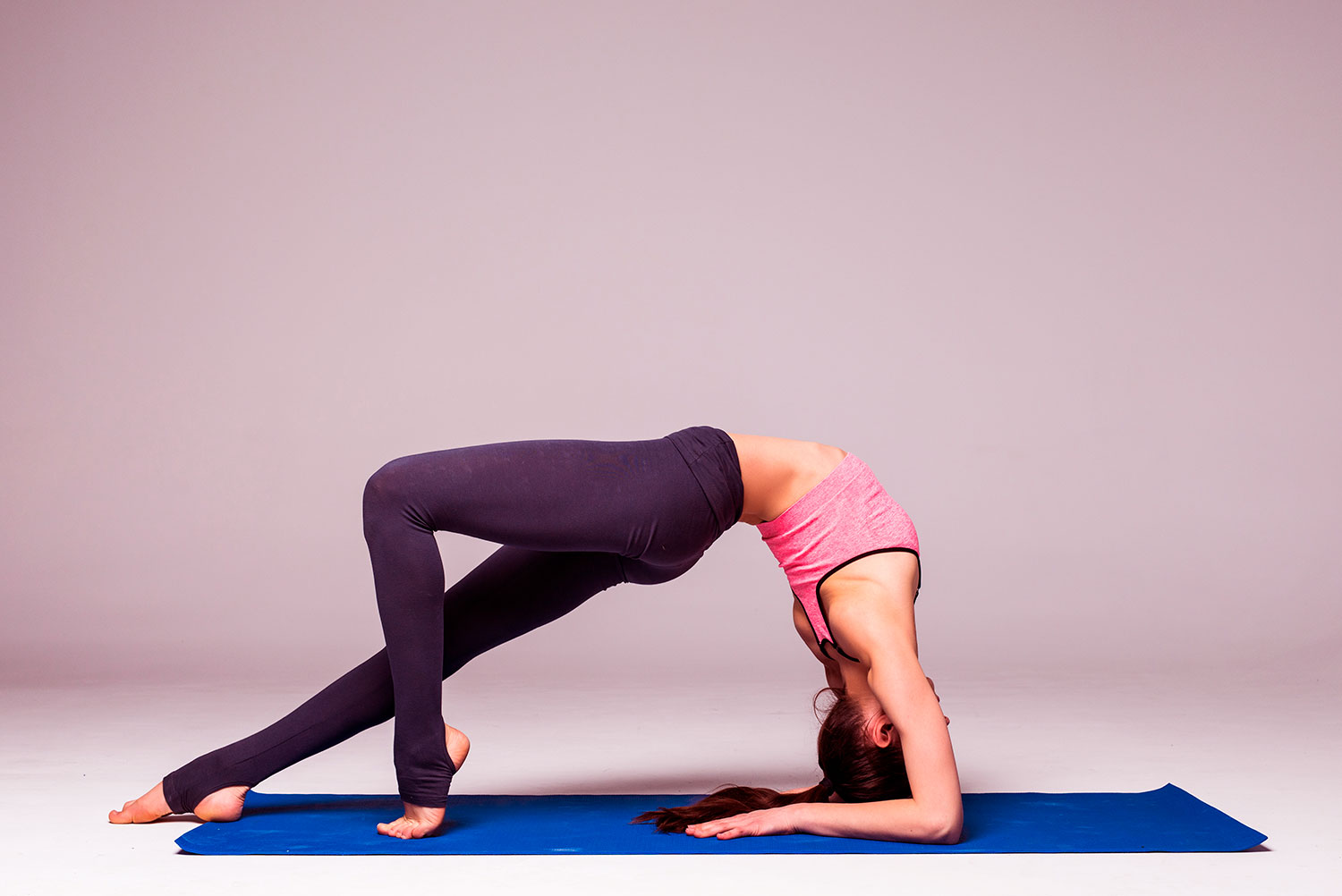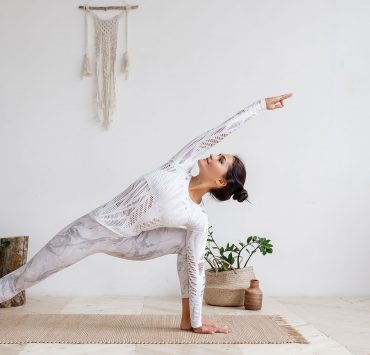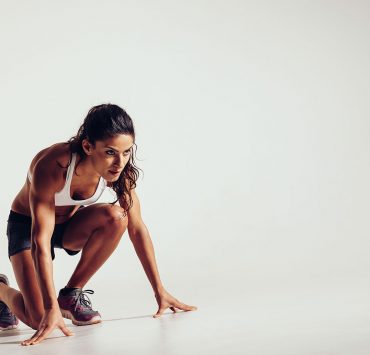
After spending nearly two decades as a relationship therapist, Patricia…
They say the key to longevity is a healthy spine, and nobody can deny the effectiveness of yoga in keeping things limber. Maintaining a consistent fitness routine, no matter how low-impact, will alleviate many of the unpleasant side effects of growing older. Yoga is a form of exercise that caters to people on all walks of life, adapting to the unique needs of each person. This life-long practice creates strength where weakness has emerged and overcomes stiffness with improved flexibility. It promotes physical and mental balance to avoid injury while fostering emotional well-being and sustainable focus. Explore the postures outlined below to embrace a slower-paced, more mindful existence.
Utkatasana — Chair Pose

It’s no secret that the arms and legs are working hard in chair pose, but it also stimulates healthy lung and heart function. It’s a highly challenging posture that engages various parts of the body simultaneously and therefore requires an increase in blood flow and breath to deliver oxygen to those areas. Stand tall with big toes touching and about an inch between the heels. Inhale the arms up alongside the head with pinky fingers turning inward and shoulderblades relaxing down the back. Exhale to bend the knees, bringing the thigh bones as close to parallel with the floor as possible. Breathe here for up to a minute, keeping the chest lifted, and the thighs active as the tailbone descends. Modify this pose by holding the hands at the heart, using a wall for back support, or placing a rolled mat under the heels.
Adho Mukha Svanasana — Downward Facing Dog Pose

A staple in many yoga practices, downward dog offers a bounty of health benefits for people of all ages. It’s terrific for preserving joint health, flexibility, and total-body strength. As women age, menopause can really ignite that inner fire, and not in a good way. Downward facing dog pose is the perfect tool to help keep your cool and restore some movement to the back line of the body. Start in a tabletop position with toes tucked and inhale to lift the knees off the floor. Exhale to send the hips up and back, firming the thigh bones behind as you draw the navel inward. If you struggle with sensitivity in the wrists, try taking this pose on your forearms or dialing the hands out slightly.
Uttanasana — Modified Forward Fold

The use of a chair during yoga lessens the risk of injury while providing an excellent option for a gentle practice. Forward folds are lovely for bringing space and length to the back and are also known for reducing blood pressure. Sit on a chair with feet positioned flat under the knees and hands resting on the thighs. As you exhale, extend the spine forward to fold over the legs. The arms can hang freely by the legs to deepen the stretch, or hands can stay on the thighs for extra support. Take 3-5 deep breaths into the abdomen, stimulating digestion and massaging the intestines. Feel free to experiment with this posture off the chair, but always listen to what the body needs and avoid overtaxing the back.
Viparita Karani — Legs Up The Wall Pose

If insomnia has you losing precious shut-eye and counting sheep just isn’t cutting it, consider incorporating some yoga poses into your nightly routine. Legs up the wall pose offers a calming, therapeutic that’s sure to lure you into a restful slumber. In addition to its soothing effects, this shape relieves anxiety, digestive issues, menopausal symptoms, and restless legs while circulating blood back to the heart. Bring a folded blanket roughly six inches from a wall for back support and position yourself seated with one hip facing the wall and knees bent. Carefully windmill the legs up the wall while shifting your weight to rest on your back. Position the hips at a comfortable distance from the wall and let the upper body go heavy into the floor. Stay here anywhere from 5-15 minutes, adding props as necessary to encourage optimal restoration.
Tadasana — Mountain Pose

Mountain pose is harder than it looks and provides the basis for all standing postures while developing posture and balance. It challenges our foundation by starting at the base and strengthening the arches of the feet and ankles. Increased self-awareness and attention to breath make this posture an excellent low-impact option for seniors. Stand with feet hip-width and arms by your sides. Feel a lift in the heart center as the shoulders relax away from the ears. Engage through the lower abdomen and legs to root into the floor while lengthening the spine upward. A great way to warm up for this shape is by starting in a chair and isolating the core activity while gently activating the legs.
Vrksasana — Tree Pose

As balance becomes an issue later in life, postures like tree pose work to regain stability while preventing untimely falls. The restored abdominal and leg strength not only brings peace of mind but also allows for ease of movement in other activities. Hip problems are a common issue as we age, so this pose is perfect for gently returning mobility to this area. Stand with feet at hips-distance and palms together at your heart. Locate a steady gazing point and drop the shoulders back to open the chest cavity. Begin to shift weight into your left foot as you bring the right foot to rest at the left ankle. Feel the descent of the tailbone as the right knee draws back to open the hip. Stay grounded and embrace any wobbles that come your way, welcoming them the same way trees tolerate wind. Breathe here for 3-5 cycles, using a chair as needed for extra support.
Salamba Bhujangasana — Sphinx Pose

Maintaining an open heart and strong upper back ensures proper alignment of the body as we age and reduces the opportunity for regular discomfort. Sphinx is a gentle backbend that brings space to the chest while working the rear deltoids. Lie down on your stomach, using a blanket for extra cushioning if desired, and place your forearms on the mat with palms planted. Press down with the arms and draw the elbows towards your body as you rise from the crown of the head. Take 5-8 deep breaths here, feeling the shoulder blades come together and the pelvis root down.
Setu Bandha Sarvangasana — Bridge Pose

Bridge pose counteracts a lot of stiffness in the body that results from sitting for long periods or absence of physical activity. It’s excellent for opening the front of the hips while stimulating the muscles of the legs and back. Begin lying on your back with feet planted at hip-width and arms by your sides. Move the shoulders slightly under the back to raise the heart center up. Press through the hands and feet as you lift the pelvis on an inhale. Engage the quadriceps and core muscles while bringing space between the chin and chest. Breathe for 20-30 seconds before slowly lowering back down to the floor. Whether you’re in need of a more restful experience, or something physically demanding, bridge pose has something for everyone. Try bringing a block or bolster under the sacrum for a restorative take on this backbend.
Ardha Matsyendrasana — Seated Twist Pose

Twists work wonders for our digestive system and effectively keep things moving while carrying space to the vertebrae. Using a chair to facilitate a seated twist helps seamlessly bring forth the detoxifying qualities we all desire. Find a comfortable seat with the spine straight and feet planted. Inhale to raise the arms overhead and exhale to lower the arms as you twist towards the right, bringing your right hand to the back of the chair and your left hand to your right side. If it’s comfortable on the neck, the gaze can travel over the right shoulder. Stay here for 3-5 breaths, continuing to find length through the spine on the inhale. It’s important to avoid forcing yourself deeper into a twist, try to focus on initiating the movement from the lower spine and kindly following it up to the gaze.
Garudasana — Eagle Arms Pose

The upper back can be a cause for nagging discomfort when not regularly stretched. Eagle arms relax this area while easing tension in the shoulders to provide relief from stubborn aches. Finding this arm variation from a seated position allows us to isolate the stretch and feel the movement entirely. From a comfortable seat, inhale both arms out to the sides. As you breathe out, bring them in front of you, crossing the right arm under the left at the elbows. Grab opposite shoulders and stay here if this feels like a sufficient stretch. If you’re craving a deeper release, continue wrapping the forearms until the right fingers lie in the left palm. Lift the elbows on each inhale and surrender the shoulders on each exhale. Take 3-5 breaths into the space between the shoulder blades before releasing.
Dandasana — Staff Pose

The delicate joints and connective tissues surrounding the knees can become troublesome as we age. Strengthening the quadriceps will help protect these areas from discomfort and future injury. Staff pose is an excellent option to stabilize the knees while improving posture by restoring muscles of the mid-back. Alleviate aches and pains in this simple seated stretch to reveal a more youthful expression of your being. Begin sitting on the floor with both legs extended out in front, perhaps bringing the shoulder blades to a wall with a rolled towel behind the lower back. Draw the kneecaps up by firming the thighs against the floor and slightly rotating them inward. Flex both feet and extend through the heels as you pull the toes towards your body. Feel the upward movement of energy from the base of the spine through the crown to maintain length as you breathe into this posture.
Anjaneyasana — Low Lunge Pose

Lunges open the hips while stretching tight muscles in the legs and releasing any built-up tension. Low lunges are great alternatives to increase stability while moving deep into the hip flexors. Start standing with feet at hips-distance and arms by your sides. Step the left foot forward and bend the knee until it’s stacked directly over the ankle. Lower your right knee down to the floor, bringing a blanket under for extra support as needed. Taking blocks on either side of the front foot for the hands can help keep the chest lifted away from the front thigh. If it feels appropriate, bring the arms overhead as you squeeze the inner thighs together. Hold for 20-30 seconds before repeating on the other side.
Savasana — Corpse Pose

Restore peace to the body and mind in this final relaxing posture. Although this pose may appear simple, it’s actually quite complex in nature. It asks that we quiet down to observe the subtle rhythm of the body with internal or external distractions. Lie on your back with legs extended and arm bones heavy by your sides. Draw the shoulders slightly under as you let the eyes soften back into the head. Bring your full awareness to the movement of breath as it travels in and out. It’s important to acknowledge what props could enhance your experience and enable you to rest efficiently. A pillow under the head or bolster under the knees could bring you into a deeper state of consciousness. Completely release any held tension in the muscles and let the breath flow freely as you take a much-needed break to reset the nervous system.
What's Your Reaction?
After spending nearly two decades as a relationship therapist, Patricia journeyed down the path of writing as a vehicle for sharing her wisdom. Her work reflects a sincere interest in readers’ wellbeing and is abundant with helpful advice and fascinating insight.















Good article and right to the point. I don’t know if this is really the best place to ask but do you folks have any thoughts on where to employ some professional writers? Thanks in advance 🙂
“I am sure this paragraph has touched all the internet
viewers, its really really pleasant post on building up new webpage”
I love your blog. It is awesome and very thorough.